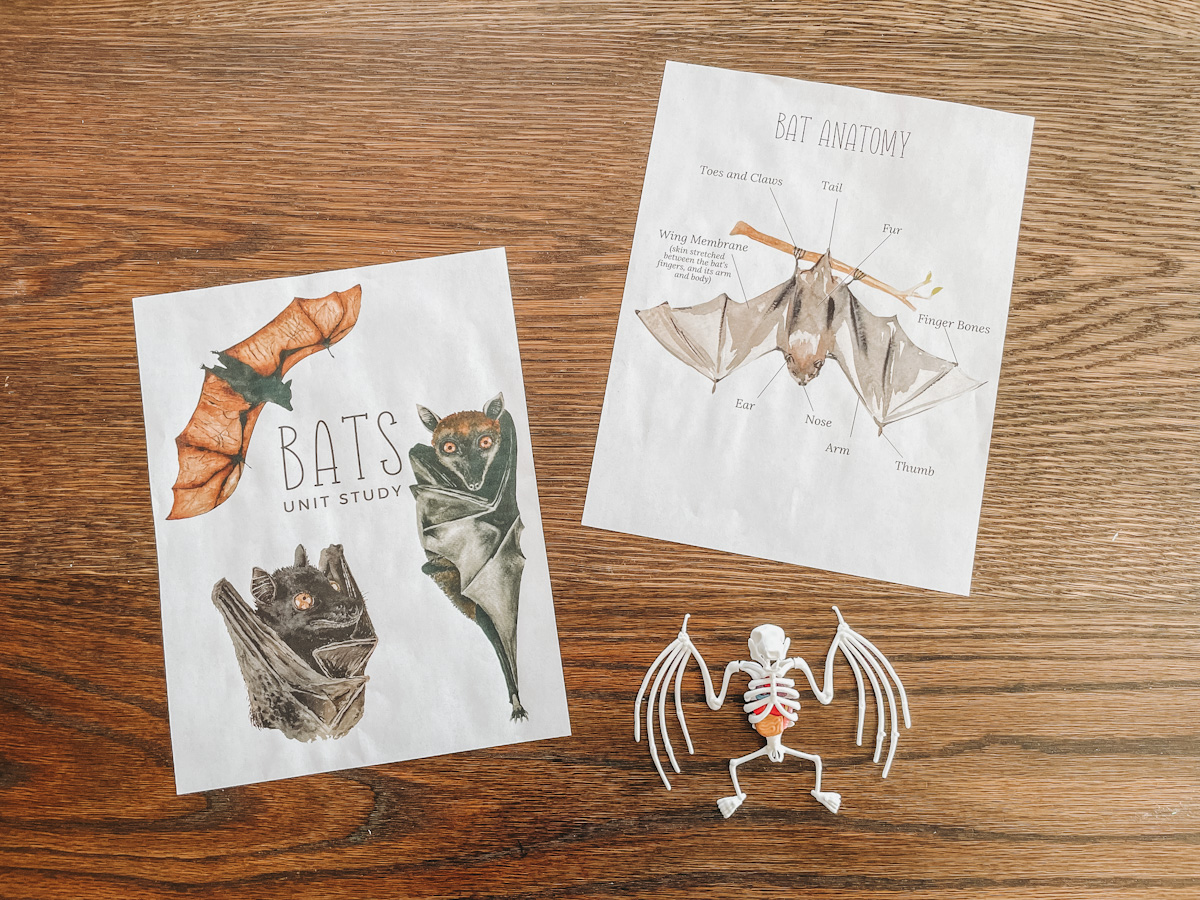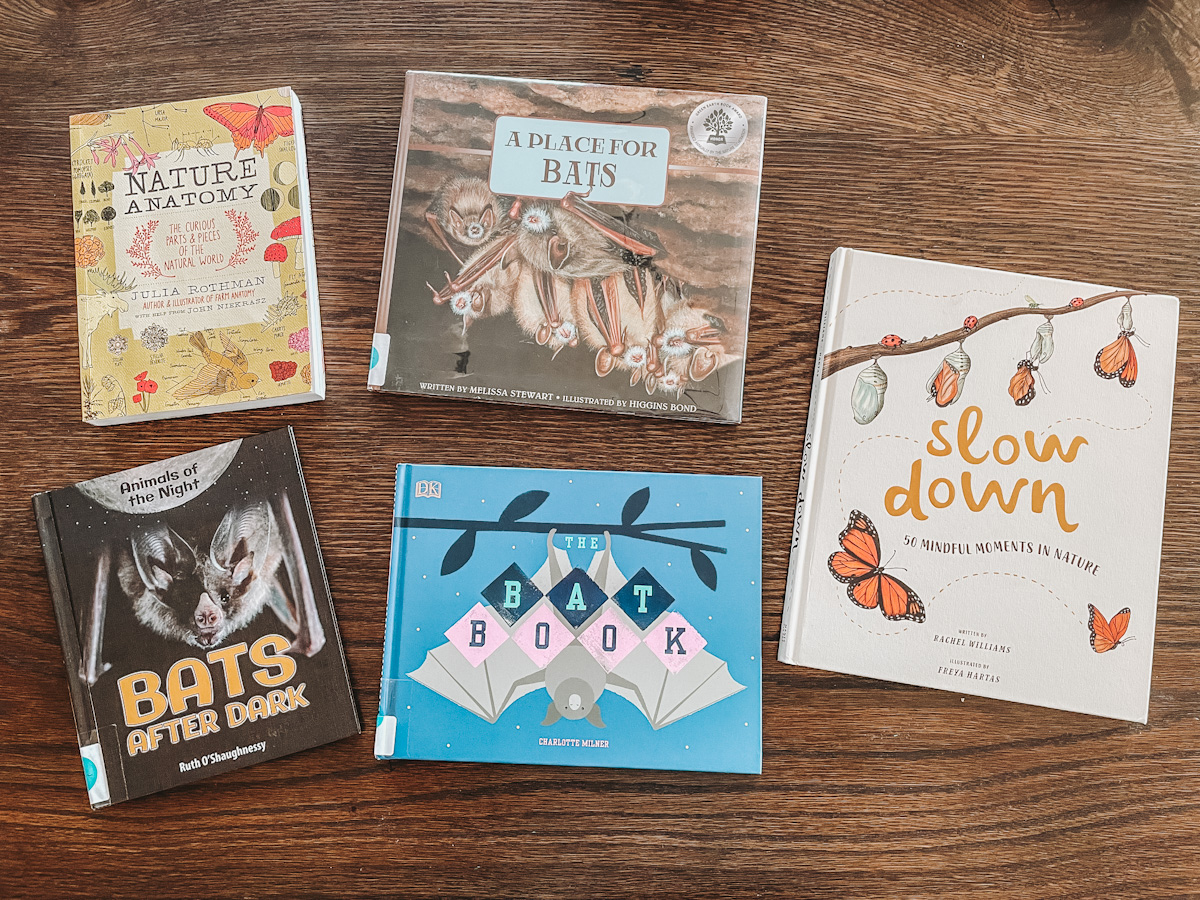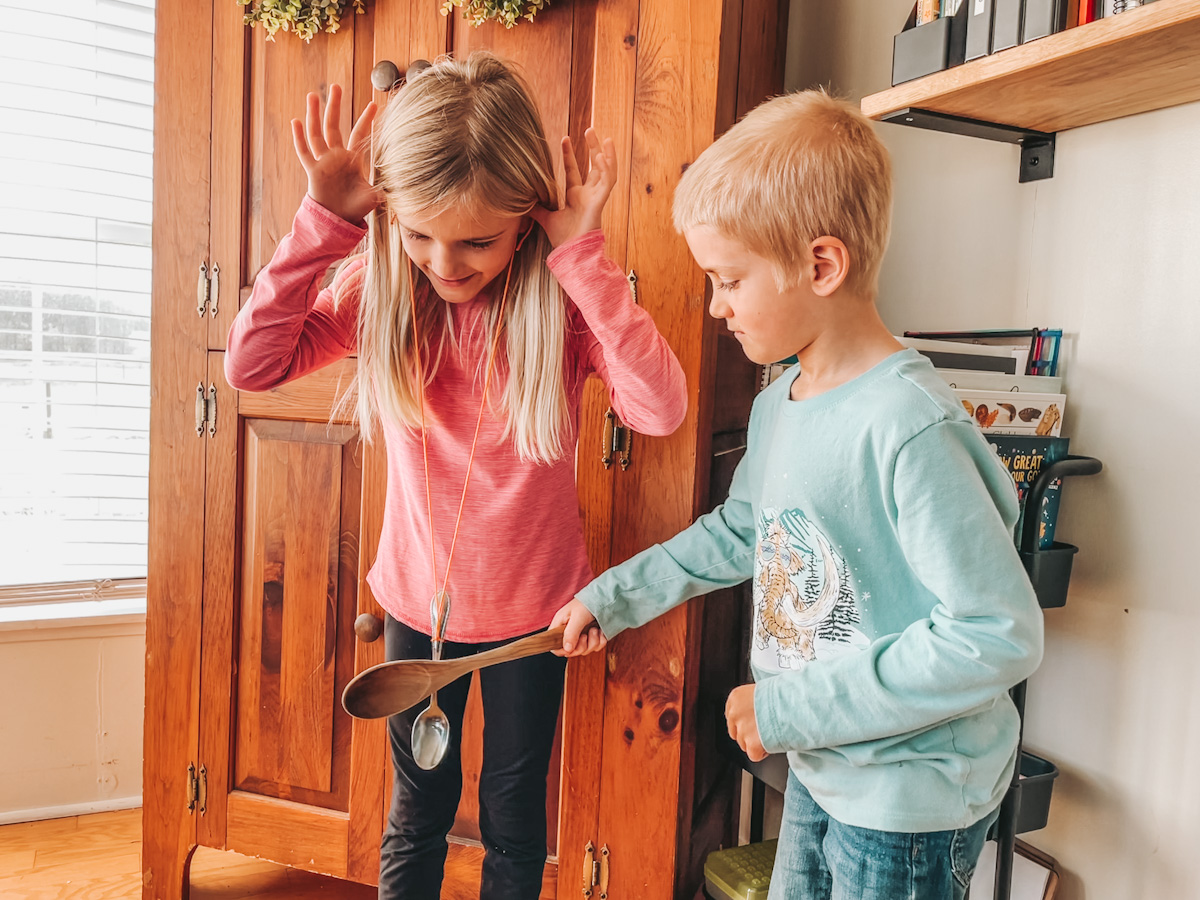Use these simple tips to put together a bat study to bring learning to life with your children. Get ideas for books, experiments, and more!

One of my favorite things about homeschooling is the freedom to dive into a topic that interests my kids and spend as much or as little time there as necessary. In the fall when all of the pumpkins and spooky stuff started coming out, my kids were super interested in bats. So, I decided to take the opportunity to piece together a bat unit study for us to all learn together.
Bats are super interesting animals that are also very beneficial to have around. By utilizing books we already owned plus our local library (a homeschoolers BEST resource!), then adding in a few simple hands on learning activities, the kids and I learned so many amazing facts about bats.
Recommended Books for Your Bat Study
I’m sure there are SO MANY books out there about bats. We utilize our library and any nature books we own ourselves when we want to learn about a certain animal. I keep a running list in the notes on my phone of books I would like to own. There are just some that end up being favorites that we would like to keep on our own bookshelf instead of borrowing all the time from the library. When a big sale comes along, I know exactly what books I’m on the lookout for…
Note: When I am looking for books to put together a homeschool unit study, I like to also include picture books that my 4- and 2-year-old will enjoy. It may have a couple facts thrown in about the animal, but it isn’t necessarily an educational book. We snuggle up and read these together, and then they may get down and play while I read more with my older two kids.

This post contains affiliate links, which means I make a small commission at no extra cost to you. See my full disclosure HERE.
Check out our favorite bat books:
**These books are ones that we personally own because we use them so often!
Hands on Learning for your Bat Study
Giving kids an opportunity for hands on learning is a great way to help the facts stick even more. When more areas of the brain get activated, the easier it is to remember things. There are so many different ways to provide hands on learning opportunities.
- Field trip – Any time you can find a field trip that is related to something you are learning about, that is a win! Even if that means going to your local zoo and standing at the bat exhibit for a while. It doesn’t have to be complicated. Just being able to see the bats fly around in person can help your kids to remember facts they learned and maybe bring up some great questions.
- Crafts – I am not the best in this area, but thankfully there are so many other moms willing to share their gifts with the rest of us. Google or Pinterest are fantastic search engines to use when you are looking for some related craft ideas.
- Art – My kids always enjoy drawing and coloring, so this is a great opportunity to use that love as a learning tool for your bat study. The Draw Write Now books are so fantastic for showing the steps to draw an animal, while also giving a little handwriting practice for the older kids.
Dissection Kit for your Bat Study
One of our favorite things the kids and I did during our bat study was a dissection. Don’t freak out! It wasn’t a real bat…although I’m sure when the kids are older we will have to navigate that. I found a bat dissection kit with plastic organs surrounded by a plastic skeleton, encased in a gelatin. We were able to see in depth what the insides of a bat look like, and the experience was really cool! Hands on learning really is the best and this allowed us to observe things we wouldn’t normally be able to and brough up a lot of great questions.

Echolocation Experiment for your Bat Study
Something really neat about bats is their ability to hunt using echolocation. I wanted to bring this ability to life for my kids so that they could experience it. All you need is a metal spoon, yarn, and a wooden spoon or stick. Tie the yarn around the end of your metal spoon so that it hangs in the middle. Have your child hold each end of the yarn up to their ears and use a finger or thumb to press the yarn against the opening to their ear. Then you gently hit the metal spoon with the wooden spoon. The vibrations travel up the metal spoon and up the yarn, amplifying as they reach the ear. You can cut different lengths of yarn and the sound will be different. This experiment shows how echolocation works to let a bat know how close their prey is to them.
Video for your Bat Study
Our family does very minimal screen-time, but we do recognize the awesome tool the internet can be when used correctly. If there are no local field trips for a study you are doing, videos on Youtube or tv programs on BBC, Nat Geo or Discovery are a great way to provide an educational experience. Find an educational video or two that are short and sweet but packed full of good information. When we are studying a specific animal, we always love to find a video to hear the sounds they make too.
Before you go, make sure to enter your email below for a couple free activity pages for your kids as you learn about bats together.
More Posts Like This:
- Penguin Unit Study
- How to Put Together a Morning Basket
- How to Use a Homeschool Loop Schedule
- Read Aloud Activities to Improve Listening
PIN IT FOR LATER


Leave a Reply